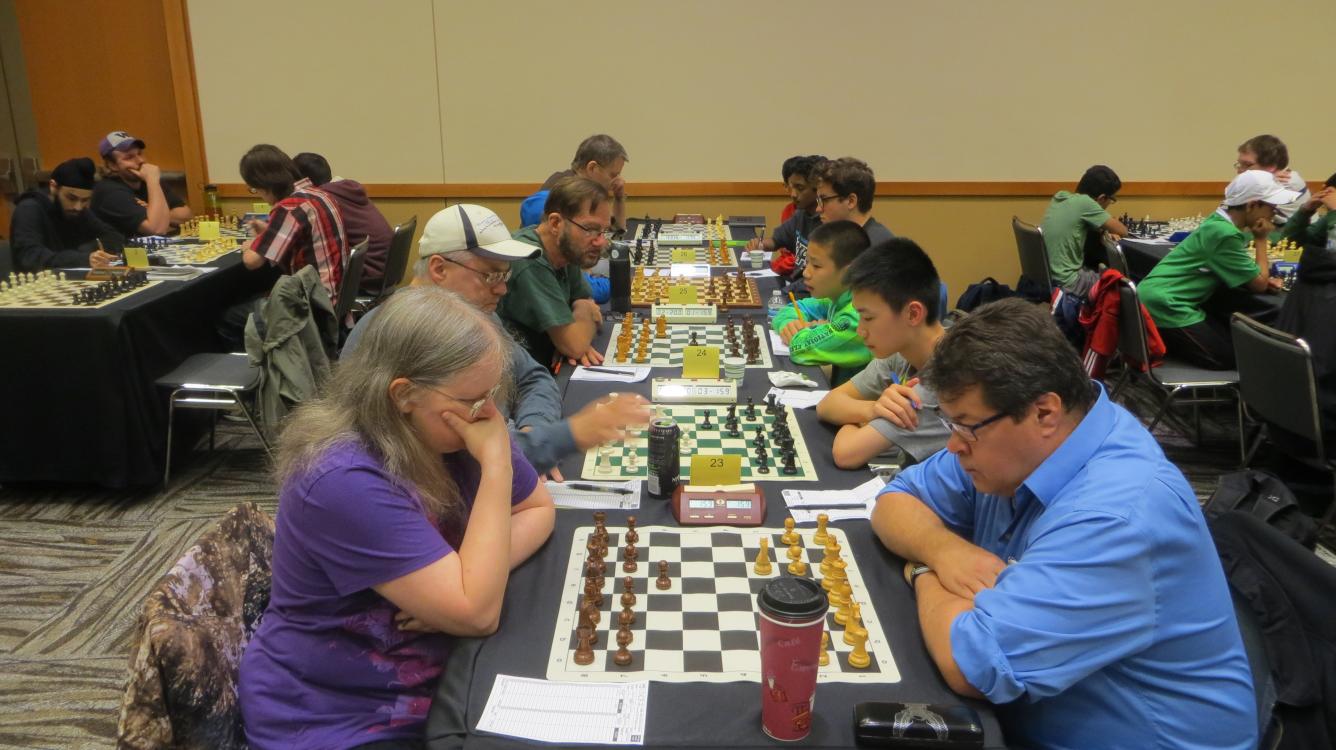
After Long Absence
In this blog I plan to record what it's like to come back to competitive chess after a long absence, so long that it sometimes feels like I've become a completely different person.
When I was fifteen (in 1979) a girlfriend talked me into playing in my first chess tournament, the Fur Rendezvous Open in Anchorage, Alaska. I could reliably beat her, everyone in my family, and a few adult friends, so we figured I was pretty good.
I lost 3/5 games. After beating me, a C player helpfully explained that not only was I not a good player, he wasn't a good player, and in fact the guys who beat him weren't particularly good players. He showed me the crosstable, which went up to dizzying heights. I was fascinated by this discovery--it was possible to be good at chess! Really, really good!
I played in about a tournament a month for the next eight years, and clawed my way up to 1900. I was in graduate school by then. Much to my surprise, I was invited to play in the US Womens' Closed Championships in 1987 (several stronger players having declined). I beat my first and only master, previous Champion Diane Savereide, and became an Expert. (The tournament was won by Anna Akhsharumova with an apparently effortless 9-0, showing once again that it is possible to be really good at chess.)
I was, however, on the verge of flunking out of graduate school. And while the Championship itself was a great experience, I found I wasn't enjoying chess much--I didn't feel I was actually Expert strength despite a string of good results, and I was becoming obsessive about rating and the prospect of sliding back down again. I came to a considered decision that I needed to quit competitive chess, at least for a while, and focus on getting my PhD.
Pride in one's rating is a dangerous thing, because it is so easy to lose all those hard-earned points. Once I stopped playing, I knew that if I started again I'd drop rapidly from my high of 2170. As time went on this became more and more of a barrier to starting again.
I got my PhD, moved to Seattle to do research, got married, developed other hobbies, adopted a child. I did play chess: skittles in coffeehouses, on the giant chessboard at a local mall, occasional games with my spouse or a colleague. By amateur standards I still played pretty well. Periodically I'd say "Someday I'd like to play in another tournament."
Someday was twenty-seven years later, as it turns out, in 2014. For my 51st birthday I received a check for the amount of USCF+WCF membership with "CHESS" written prominently on it. I wasn't totally unprepared: I'd been playing blitz, first on instantchess and then on chess.com, and an occasional slower game. I'd taught myself the Alapin Sicilian by playing it in blitz. But I had no idea how I'd do in an actual tournament. My blitz ratings were stagnant around 1600-1800.
To my surprise, USCF had no rating for me: ratings prior to 1991 were discarded in the course of computerization. To my greater surprise, I had a FIDE rating of 2130, presumably from the Womens' Championship. At that time FIDE ratings below master were not published, so I'd never known. So I entered my first tournament, the Seattle Seafair Open, with a provisional USCF rating of 2130 "based on 5 games". I felt like a complete fraud--I was certainly not a 2100 player anymore, but there was no escaping it. I found myself surrounded by highly impressed small children, and wondered unhappily how they would react when they found out the truth.
